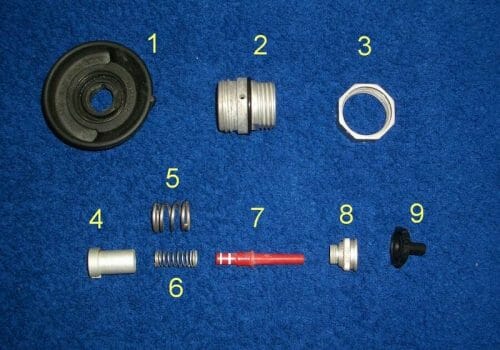Pressure cookers are handy tools. They are so quick for developing the food’s flavor and texture that what used to be a long process now seems easy and casual.
- You can cook an entire chicken in only 90 minutes.
- You can prepare Risotto in six minutes instead of half an hour.
- Now grits and polenta no longer require stirring. Simply pressure-cook them in oven bags or canning jars at a high temperature.
What else?
Because of the high temperature, the cooker helps caramelize and brown for taste and added flavor. It’s certainly impossible with other cooking methods.
Why Food Takes Less Time to Cook in a Pressure Cooker
Pressure cookers take much less time to cook your favorite meal. This post will take you through the elements that make quick cooking possible. The features of modern-day pressure cookers give you an added advantage over traditional methods of slow cooking, and they’re quite safe as well.
 But, before you move ahead, you should learn why high pressure is necessary in cooking.
But, before you move ahead, you should learn why high pressure is necessary in cooking.
Basic Elements of a Pressure Cooker
A pressure cooker has a semi-sealed lid which is lockable. It also has a valve for controlling internal pressure. With the help of captured steam, it increases the pressure inside the vessel.
The rise in pressure gives rise to the boiling point of water from 100oC (at sea level). As the temperature goes beyond and reaches 120oC, the cooking time drops significantly.
Here are different cooking temperatures on different pressure levels

- If the pressure inside the pot is 0 psi, the temperature will be 0oC or 212oF
- If the pressure inside the pot is 5 psi, the temperature will be 104oC or 220oF
- If the pressure inside the pot is 10 psi, the temperature will be 113oC or 235oF
- If the pressure inside the pot is 15 psi, the temperature will be 121oC or 250oF
How Does A Pressure Cooker Work?
These factors make the cooking process quick and safe.

- The high-pressure steam doesn’t submerge in liquid, transferring heat to the food’s surface quite rapidly.
- There is a spring-loaded valve which normally opens when there’s too much air inside, to let the air escape. As heating starts, the vapor pushes the valve up and closes off the vent. As the pressure rises, the vapor pushes the valve further up to reopen the vent, in order to release extra steam.
- The valve has a gauge pressure which is 10 or 15 psi above room pressure. At these pressure levels, the boiling point of water rises to 114oC – 112oC. When you see your pressure cooker attaining the right pressure, reduce the external heat. Otherwise, it will create overpressure.
- The pressure cooker has a sealing ring (a rubber gasket) that restricts air and steam from escaping. The captured air/steam inside the pot builds pressure and causes the temperature to rise. The gasket must be cleaned properly; otherwise the food particles stuck around the seal cause steam to leak out.
- There are different lid lock mechanisms. A bayonet-style mechanism pushes the lid against the sides of the pot. There are other mechanisms with bolts clamping around the exterior of the cooker. If you let the cooker’s pressure go to high, this mechanism can be damaged.
- At high pressure, the handle locks and prevents the lid from opening. In this way, the food is cooked quickly.
- You need to fill the liquid up to 2/3 the capacity of the cooking pot.
- The pressure inside the cooker continues to rise, due to the steam and water vapors inside, until the pressure valve stabilizes it.
- Steam is essential for cooking food in a pressure cooker. So, you need to add enough water around the food or under the food container, above the bottom of the pot.
Now, that you know it all, you’re all set to cook your favorite recipes quickly. Make sure you check every part of the cooker before using it. Follow the manufacturer’s manual and understand how to use the cooker to cook different kinds of food.
You also can see:
Which position should the valve be in to use and create pressure? there are two icons: one shows the pot with steam and the other just shows steam.